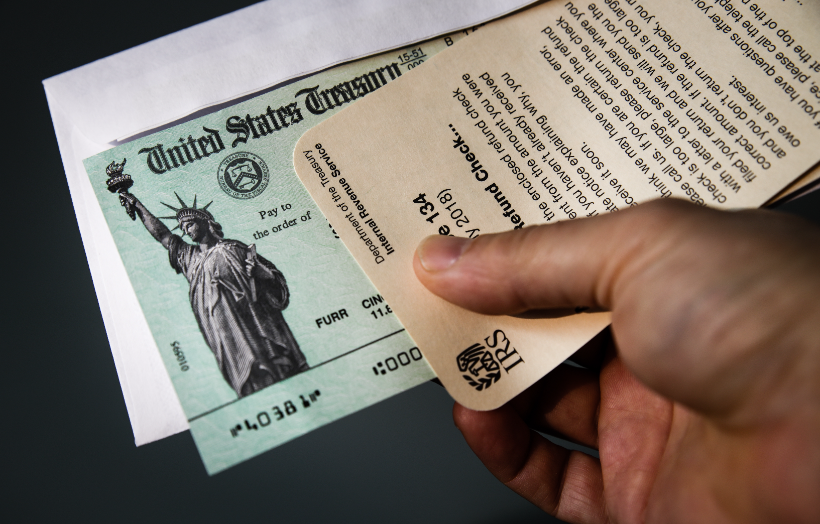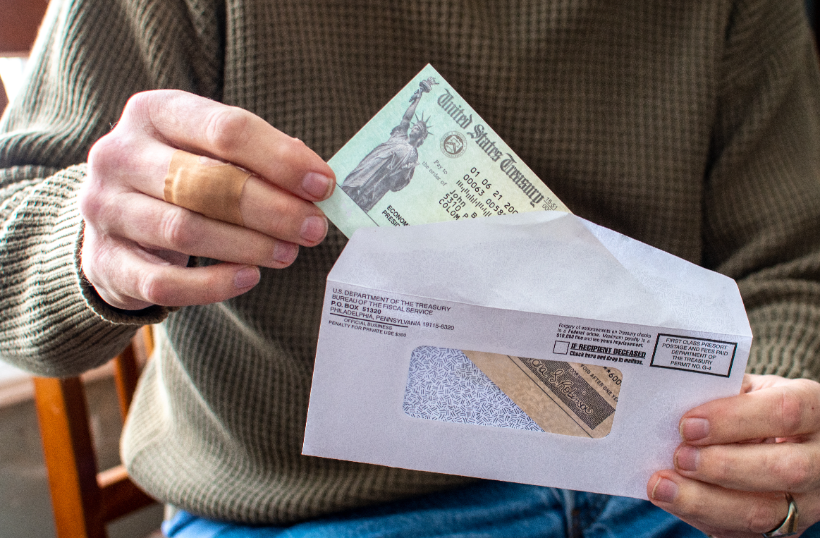Second Stimulus Checks: When, How, and How Much – $600 or $2,000?
Published:Find Out If You Qualify for a 2nd Stimulus Payment and How Much You Will Get
Stimulus checks from the latest Coronavirus relief bill are officially being sent to bank accounts across the U.S., according to Treasury Secretary Steven Mnuchin. These payments are $600 per eligible individual, plus $600 for each qualified dependent child.
Here’s what you need to know about the second round of stimulus checks (also called Economic Impact Payments, EIPs).
The COVID-Related Tax Relief Act of 2020
On December 27, 2020, President Donald Trump signed the COVID-Related Tax Relief Act of 2020. This is the second major piece of federal legislation that has been signed into law; it is designed to help the millions of Americans who are struggling with the economic fallout from the Coronavirus pandemic and resulting lockdowns. The first major piece of legislation, the Coronavirus Aid, Relief, and Economic Security Act (a.k.a. CARES Act), was signed into law on March 27, 2020.
This new stimulus bill renews some of the government benefits for COVID-related relief that were originally created by the CARES Act. This includes a second round of stimulus payments (this time for $600 instead of the previous $1,200), extended unemployment benefits of $300 per week, more funds for the Paycheck Protection Program (PPP) for small business loans, and other programs.
For more information about this latest stimulus package, see: COVID-19 Relief Act & Government Funding Bill Signed Into Law.
Second Round of Coronavirus Stimulus Checks: $600 Payments
The most recent round of stimulus payments are $600 per qualifying individual, plus $600 per eligible dependent child. The Internal Revenue Service (IRS) and the Treasury Department have announced that these Economic Impact Payments have already begun to be deposited into bank accounts for people who have Direct Deposit.
Do I Qualify for a Stimulus Check & How Much Will My Payment Be?
In order to be eligible for the $600 stimulus payment, a single individual’s annual Adjusted Gross Income (AGI) must be $75,000 or less for tax year 2019. If your AGI is more than $75,000, your stimulus check will be reduced by $5 for every $100 of income above that threshold. A single individual whose AGI is above $87,000 will not qualify for a stimulus payment.
For a married couple, the AGI threshold amounts are doubled. This means that a married couple can jointly receive a $1,200 stimulus check if their combined income is $150,000 or less. If a married couple has AGI that’s above $174,000, they will not be eligible for this second round stimulus payment.
Additionally, if you have any qualified dependents (i.e. children under age 17), you may be eligible for another stimulus payment of $600 per dependent.
When Will I Get My Stimulus Check?
According to the Treasury Department, these Economic Impact Payments are being delivered into bank accounts as early as Tuesday (December 29, 2020) night for those who already have Direct Deposit set up with the IRS. Paper checks are being mailed out as early as Wednesday (December 30, 2020) for people who do not have a Direct Deposit bank account on file with the IRS.
How Do I Get My Stimulus Check?
The IRS has a “Get My Payment” online tool that people can use to register for an Economic Impact Payment (EIP). If, for some reason, your data is not on file with the IRS, you can use this online portal to submit your information and see if you qualify for a stimulus payment.
NOTE: The “Get My Payment” online tool may be offline temporarily as the IRS updates it with the most current information based on recent legislation. Please continue to monitor this page for updates and check the following link for your Coronavirus stimulus status:
>> Get My Payment: IRS Online Tool for COVID Stimulus Checks
If you don’t normally file a tax return, you can submit a “simple tax return” if you want to receive a stimulus payment. If this situation applies to you, you can enter your information using the IRS “Economic Impact Payments” online tool for non-filers.
Check the Status of Your Stimulus Payment
If you have been waiting for your stimulus check to arrive, or just curious about the status of your EIP, you can check the progress of your COVID relief payment online.
The IRS has an online tool where you can check the status of your Coronavirus relief payment and see when it will arrive. The IRS will be updating this platform once a day. For information about looking up the status of your stimulus check, visit the “Check Payment Status” site.
>> Check the Status of Your COVID Payment
NOTE: The “Get My Payment” online tool may be offline temporarily as the IRS updates it with the most current information based on recent legislation. Please continue to monitor this site for updates.
Keep in mind that the stimulus payments are not subject to tax and they will not affect your tax refund – furthermore, you are still eligible for an EIP even if you owe back taxes.
Will Stimulus Payments Increase to $2,000?
Before President Trump signed the COVID-Related Tax Relief Act of 2020, he stated that he wanted lawmakers to increase the stimulus payment to $2,000 per individual. This was taken up by Congress and they voted in favor of a standalone piece of legislation to raise the amount of the Coronavirus relief checks to $2,000 each. While it is now up to the Senate to vote on (and pass) this bill, many believe it’s unlikely to happen.
This situation is being monitored as it develops. Please continue to check this page as it will be updated with the latest information about the second round of stimulus payments.
The CARES Act (March 2020) – First Round: $1,200 Stimulus Checks
The Coronavirus Aid, Relief, and Economic Security Act (a.k.a. CARES Act) was signed into law on March 27, 2020. This historic federal stimulus package provided funds for a variety of programs – including stimulus checks for many Americans, loan relief for small businesses and students, and expanded unemployment benefits – among other legislative items.
Eligibility requirements for the first round of stimulus payments from the CARES Act were slightly different than they are for the second round. The $1,200 stimulus checks were given to people with AGI below:
- $99,000 for Single Filers
- $198,000 for Married Couples Filing Jointly
- $136,500 for Head of Household Filers
RELATED: Check the Status of Your Coronavirus Relief Payment



